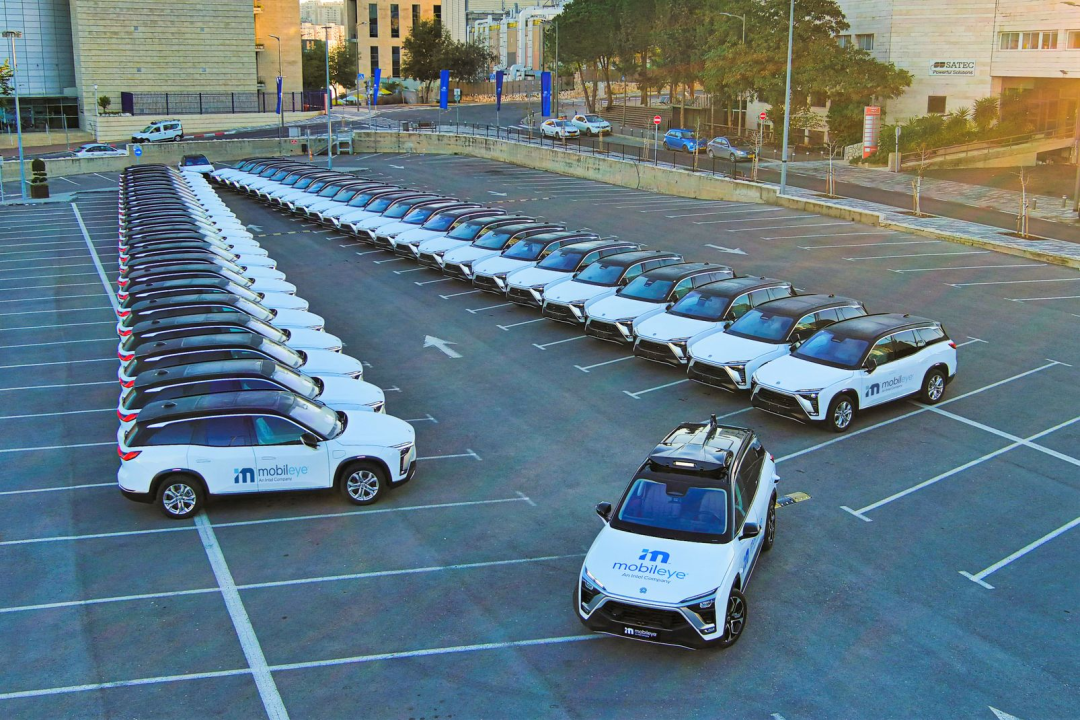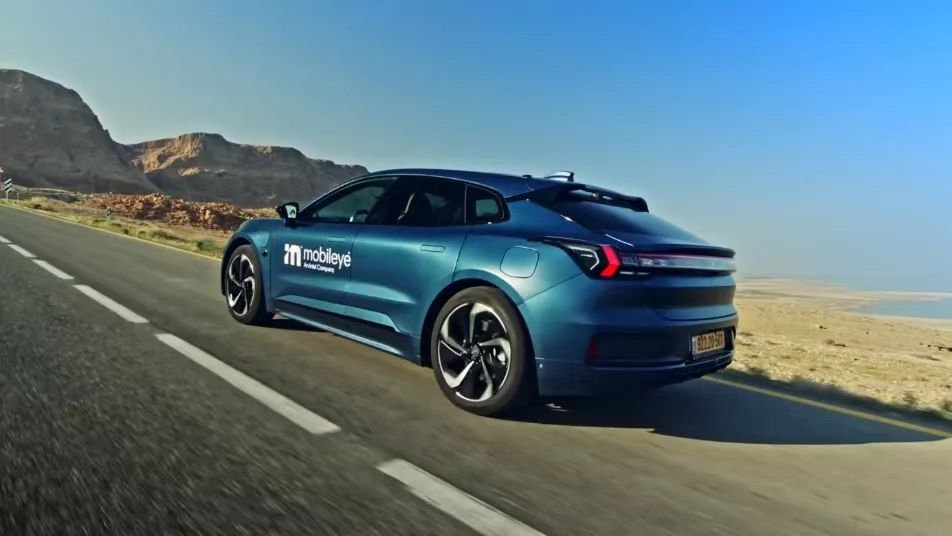Mobileye Goes Public on NASDAQ, with Lower-than-Expected Valuation
Author: Mingzhi Sun
Editor: Xianzhi Wu
Mobileye, a subsidiary of Intel, went public on NASDAQ on October 26, 2022, with an issue price of $21 per share, higher than the company’s guidance price of $18-20 per share.
Mobileye issued a total of 41 million shares, raising $861 million, bringing the company’s valuation to about $17 billion.
It is worth mentioning that Mobileye’s valuation in its IPO roadshow was $30 billion, while Intel’s initial valuation was $50 billion. Mobileye’s valuation has decreased by over 60%. Additionally, when Intel acquired Mobileye in 2017, it spent $15.3 billion. Considering inflation in recent years, it is almost like standing still.
For Mobileye’s industry influence and business size, raising less than $1 billion in funding is not much at all. Moreover, this IPO only publicly sold 5% of Mobileye’s total share capital, whereas traditional IPOs are mostly 10% to 20%.
Currently, Intel still holds most of Mobileye’s stocks, including all the future “Class B common shares,” which have voting rights equivalent to 10 shares of “Class A common shares” per share. Reuters believes that Intel is intentionally controlling the low valuation to minimize the impact on the company.
The media described Mobileye’s listing as “disaster” and “desperate yet eager.” Intel CEO Pat Gelsinger stated that this IPO is not to raise money, but to push Mobileye to the market.## Mobileye Trails in Technology, Lacks Computing Power, and Has a Closed System
Mobileye was founded in Israel in 1999 and is a leading supplier of autonomous driving chips and solutions. The company’s EyeQ series of chips are widely used in the field of autonomous driving. Amnon Shashua, founder of Mobileye, stated in the IPO that the company’s driving assistance technology has been used in more than 125 million cars.
By 2021, Mobileye had sold a cumulative total of 1 billion chips, which has brought the company high-speed growth. According to financial data, from 2019 to 2021, Mobileye’s revenue for the past three years were $879 million, $967 million, and $1.4 billion, respectively, showing a year-on-year growth trend.
However, Mobileye has not yet achieved profitability. Their losses for the years 2019-2021 were $328 million, $196 million, and $75 million, respectively, which total loss decreased year by year. The reason for their losses is due to their acquisition of AI company Moovit, an increase in employee salaries and R&D costs; income growth offsets its losses to a certain extent.
Nevertheless, with the appearance of competitors in the market, Mobileye is starting to have difficult times. Although Mobileye has partnered with 50 global automakers, more and more car companies are starting to choose to work with other chip manufacturers.Tesla used their self-developed FSD chip to replace Mobileye EyeQ3; Ideal Auto also replaced Mobileye EyeQ4 with Horizon Journey 3; BMW formed an autonomous driving alliance with Mobileye in 2016, but they will start using the Qualcomm Snapdragon Ride autonomous driving platform after 2025; and many other car companies have chosen NVIDIA’s Orin.
The main reason for this situation is that Mobileye, which was previously in a leading position in the industry, has fallen behind.
As the “brain” of intelligent vehicles, autonomous driving chips need to process a lot of data, and they have high computational requirements. The automotive market has already appeared in the way of using computational power to highlight product strength.
Currently, NVIDIA launched the autonomous driving chip Orin in 2019, which has a single-chip processing power of up to 254 TOPS; then in 2021, they released Atlan, which has a single processing power of 1000 TOPS, and Thor, with 2000 TOPS, was released in 2022, which made Atlan just a transitional product.
In contrast, the highest processing power of Mobileye’s latest chip, EyeQ Ultra, released this year is only 176 TOPS, which is even inferior to NVIDIA’s Orin.
In the domestic market, Mobileye’s product advantages are not great either. The computational power of Black Sesame Intelligence’s Huashan II A1000 chip is 58 TOPS; the computational power of Horizon Journey 5 also reaches 128 TOPS, while the highest mass-produced chip of Mobileye, Eye Q5, has only 15 TOPS of computing power.
 In terms of chip computing power, Mobileye has fallen far behind. Despite Mobileye’s repeated claims that computing power is not the only standard, automakers do not agree.
In terms of chip computing power, Mobileye has fallen far behind. Despite Mobileye’s repeated claims that computing power is not the only standard, automakers do not agree.
Furthermore, Mobileye provides automakers with a bundled package of “chips + perception algorithms” and even requires automakers not to develop their own perception vision algorithms when signing contracts with some automakers. However, most domestic automakers have plans to develop their own intelligent driving, which has led automakers to choose to cooperate with other vendors.
The main reasons that Mobileye has fallen behind are low chip computing power and the limitations of a closed system.
Mobileye’s Strength
Nevertheless, the lagging Mobileye still has a relatively strong strength.
In July 2022, the company officially released the first development software toolkit for Eye Q system integrated chips, Eye Q Kit. This means that Mobileye has finally abandoned the conservative “black box”, and automakers can deploy differentiated algorithms and human-machine interface tools on the Eye Q platform.
Although the chip computing power of the Eye Q Ultra introduced by Mobileye is relatively weak, it is a streamlined automatic driving car chip.
In addition to the Eye Q Ultra, two new Eye Q system integrated chips that use ADAS solution were also launched-Eye Q 6L and Eye Q 6H. These two chips adopt 7nm process technology and are positioned as high-cost-performance pure camera solutions. The computing power of Eye Q6 H is approximately twice that of Eye Q 5H, targeting the L2+/L4 (including L3) markets.In September 2021, Mobileye released a Robotaxi based on the NIO ES8, which is expected to launch as a fleet in Munich, Germany and Tel Aviv, Israel in 2022.
Moreover, Mobileye’s collaboration with Geely is expanding. On September 26, 2022, Mobileye announced the expansion of their partnership with Geely in advanced driver assistance systems and autonomous driving. Three additional Geely brands plan to launch electric vehicle models equipped with Mobileye SuperVision globally starting in 2023.
It must be acknowledged that although Mobileye is no longer the dominant player in the automotive chip and intelligent driving fields, the company’s strength is still not to be underestimated. Mobileye’s performance in the secondary market also confirms this.
On October 26, Mobileye went public at $26.71 per share, and eventually closed at $28.97 per share on the same day, an increase of 37.95%, making the company’s total market value exceed $23 billion.
Mobileye’s performance exceeded expectations, setting a record for the largest increase on the first day of trading for a U.S. large-cap company in 2022, and Intel’s strategy of taking Mobileye public to gain publicity has achieved initial success.
This article is a translation by ChatGPT of a Chinese report from 42HOW. If you have any questions about it, please email bd@42how.com.
